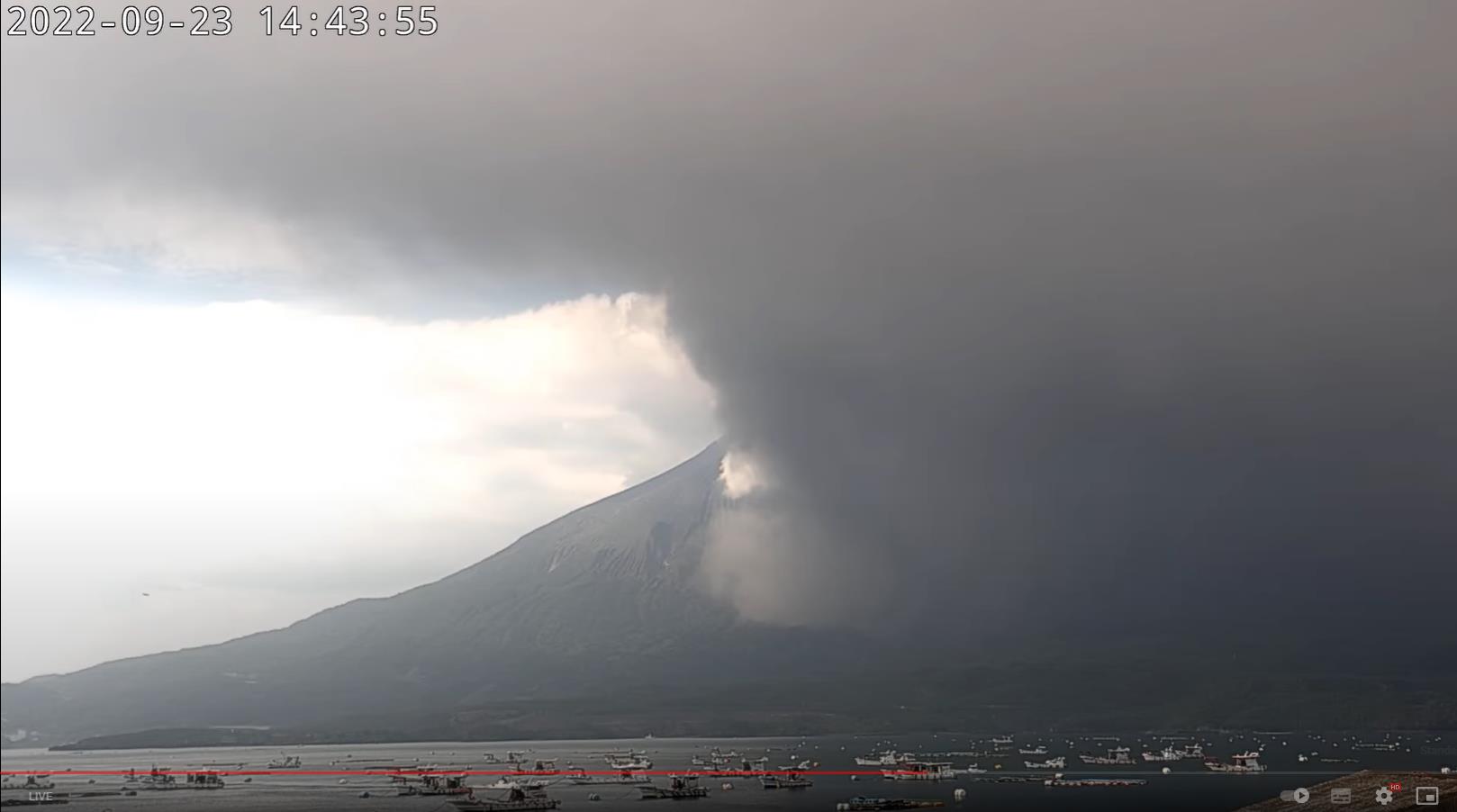Sakurajima volcano eruption (Japan, 09/23/2022)
The Sakurajima volcanic mountain continues to spew ash and smoke.
The Sakurajima volcanic mountain continues to spew ash and smoke.
Researchers start eavesdropping on 800 volcanoes in the Eifel

Df1paw/ CC-by-sa 4.0 Below the Laacher See lies a complex of 800 volcanoes.
Thursday, 09/22/2022, 10:44 am
The volcanic area under the Eifel is actually considered an extinct super volcano. But there's a rumbling underground. Is there still an active volcano? A large measurement campaign is now to find out.
Hidden fire: Something is happening in the volcanic area below the Eifel - deep tremors and uplift of the subsoil indicate ongoing activity. However, what is behind it and whether the Eifel super volcano will become active again is uncertain. A large-scale measurement campaign is now intended to provide more clarity. A dense measuring network of highly sensitive geophones is intended to show what the magmatic system under the Eifel looks like and how deep the volcanism is sleeping there.
Around 13,000 years ago, a super volcano erupted in the Eifel, burying half of Central Europe under ash and lumps of lava. The explosive eruption of the Laacher See volcano ejected around 20 cubic kilometers of material and temporarily blocked the Rhine. Ash clouds traveled as far as northern Italy and Russia. Since then, the around 800 volcanoes of the Eifel complex have been dormant - there have not been any major eruptions.
Anomalous uplift and series of deep tremors
However, the Eifel volcanism does not seem to have died out completely: the latest GPS measurements show that the subsoil in the Eifel region is rising to an unusual exten . In addition, since 2013, low-frequency earthquakes from the lower crust and upper mantle have been regularly registered in this region. Such earthquakes can be an indication that liquids or gases in the earth's crust are rising. These small tremors are generated by vibrations in rock crevices.
But what exactly does that mean for us? Normally, subsurface uplift and seismic tremors at volcanoes indicate that magma and volcanic gases are rising and the underground magma chamber is refilling. However, it would also be possible that under the Eifel simply hot liquids and gases are in motion without a new eruption threatening in the foreseeable future.
A dense network of measuring devices around the Laacher See is intended to clarify structures and processes of the Eifel volcanism.© GFZ
350 geophones are supposed to eavesdrop on underground processes
In order to create more clarity about what is happening under the Eifel, volcanologists have now started a large-scale investigation under the leadership of the German Research Center for Geosciences (GFZ). The "Large-N-Experiment" examines the underground of the Eifel more precisely than before. This could clarify what is moving in the earth's crust. In addition, the experiment will help the researchers more accurately image and map the magma chamber of the Laacher See volcano and the rest of the volcanic area.
Employees from the universities of Kiel, Mainz, Frankfurt and Cologne , the GFZ and the state earthquake service of Rhineland-Palatinate are currently working together in the Eifel for the large measurement campaign . They set up around 350 geophones in the districts of Mayen-Koblenz and Ahrweiler - sensitive measuring instruments that listen to the underground and record even weak seismic vibrations.
“Look deep underground”
"With this experiment, which is unique in Germany, we want to look deep beneath the earth's surface and find out how the subsurface is made up and what is happening there, i.e. observe the dynamics. Above all, it's about volcanic activity," explains project manager Torsten Dahm from the GFZ. According to the volcanologists, there is no danger of an early eruption in the Eifel. Nevertheless, it is important to research and monitor what is happening underground.
The experiment is expected to last about a year and will register both earthquakes and background noise. The dense measuring network enables a higher resolution than previous investigations. Because the geophones also continuously record the measurement data over a year, the volcanic processes in the subsoil can be better characterized and monitored based on the localization of the seismic signals.
"If we have a better understanding of the processes and conditions underground, we can compare the data with those of active volcanic areas," explains Dahm. Then we can also better assess what the rumblings underground mean – how deep the volcano is asleep, if you will.”
The original of this article "Researchers start eavesdropping on 800 volcanoes in the Eifel" comes from scinexx.


 www.vulkane.net
www.vulkane.net

